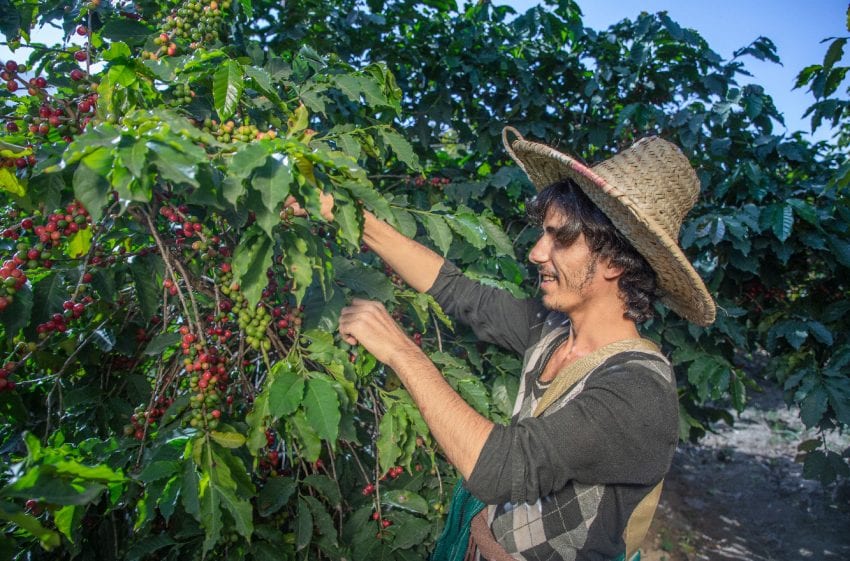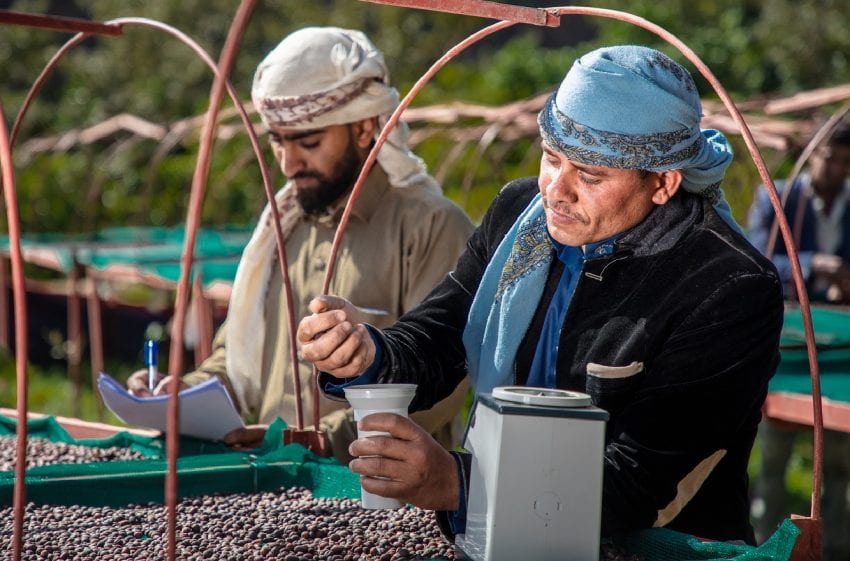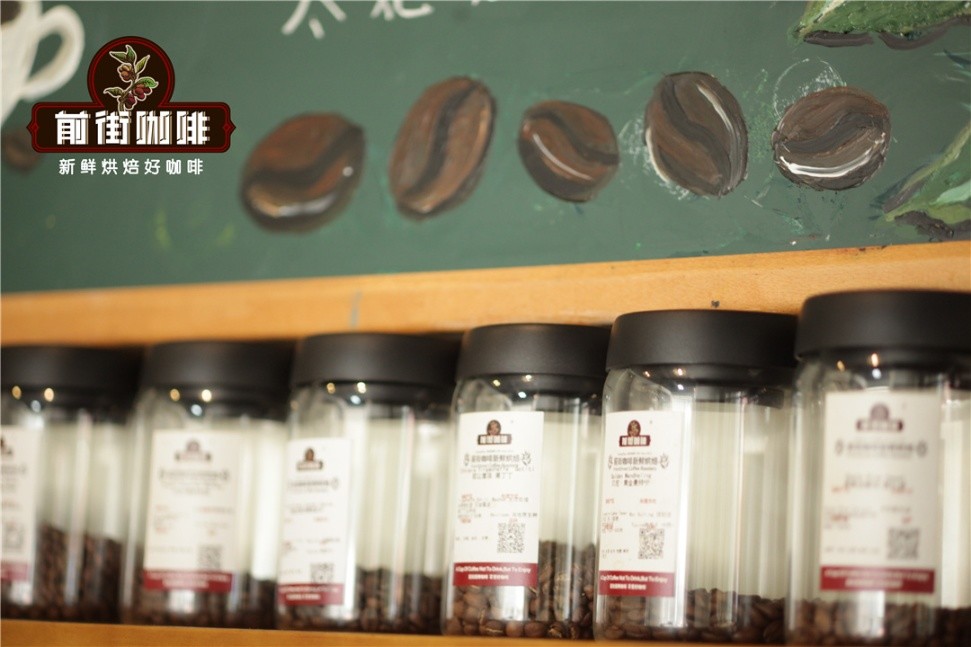From an exit port to a smoothie! The place of origin of coffee you are not familiar with-Yemeni mocha
Professional coffee knowledge exchange more coffee bean information please follow the coffee workshop (Wechat official account cafe_style)
There was a time when most coffee drunk in Europe came from Yemen, but now Yemen accounts for less than 1% of the world's coffee exports.
Despite the significant increase in production in other coffee-producing countries, the impact of Yemen on our coffee culture and varieties today is not to be underestimated. The coffee you drank this morning may have come from plants grown in Yemen hundreds of years ago.
In addition, coffee remains important to many rural communities in Yemen, and producers are working to overcome the economic and personal security challenges posed by the civil war. However, some locals also produce coffee with unique and complex flavor through professional evaluation, and make a living by it.

The Cornerstone of Coffee History: Yemen
Since 1536, most coffee sold to Europe and Turkey has come from Yemeni coffee.
Historians are not sure when Yemen started growing coffee. Ethiopia is widely believed to be the birthplace of coffee, although it has not been confirmed whether it may also have originated in Arabica, Yemen. However, some historians also speculate that in the 13th or 14th century, Arabs may have introduced coffee into Yemen, or monks may have needed caffeine to keep themselves awake during nocturnal rituals.
When the Ottoman Empire took control of Yemen in 1536, coffee became an important part of the local economy. The Ottomans realized that Yemen could also export large amounts of coffee, the first global trade in coffee. As merchants shipped the newly discovered drink to the Ottoman Empire and Europe, coffee shops began to emerge and consumer demand increased.

Mocha supplied coffee from all over the world at that time.
Yemeni coffee is exported to Europe through the Red Sea port town of Mocha. When the ship docks, the coffee is carried by a camel and then transported to Alexandria, the capital of Egypt along the Mediterranean coast.
At this stage, European businessmen such as the Dutch East India Company will tow coffee onto wooden boats and transport it to the European market. The new drink, named Mocha Coffee by the Dutch, was initially shipped out of the city. With the passage of time, coffee and mocha have become inseparable pronouns.
Yemeni coffee is a huge business opportunity for the Ottomans, who are careful not to let its production process flow out to maintain the wealth of their empire. "the factory was closely protected at that time," said Abdulahman, chief executive of Sabcomeed, a Yemeni company that specializes in direct trade with Yemeni producers.
In fact, to ensure that no other country can grow coffee, they soak all exported coffee beans in boiling water or roast and heat them a little first. In this way, stop the coffee beans from sprouting to prevent the buyers of coffee beans from growing their own coffee.
This practice lasted for more than 150 years, but with the rise of the European coffee market, it was only a matter of time before the Ottoman Empire could not monopolize the coffee market.

The change of the meaning of mocha: from an export port to a smoothie
In the 17th century, Muslim pilgrim Baba Budan was often praised for breaking Ottoman's shackles on coffee production. It is said that he stole seven seeds and successfully planted them in the Mysore Mountains in southern India (then known as the Malabar Mountains). Soon after, the Dutch began to grow coffee in their colony, Java, Indonesia.
It wasn't long before Yemen and the Ottoman Empire lost their monopoly on the global coffee trade. In 1721, it was estimated that 90% of the coffee in Amsterdam, the Netherlands, was made in Yemen. But just five years later, it was 90% from Java.
Then, decades later, coffee was grown in more colonial countries, and people began to forget this daily drink, which used to be widely distributed in Mocha in Yemen. However, the importance of Yemen to the history of coffee still exists in two important aspects.
First of all, let's take a look at the two main varieties of coffee in circulation around the world: iron pickup and bourbon. WCR of the World Coffee Institute considers them "the most culturally and genetically important Arabica coffee in the world". Extending from these two varieties, we can find different varieties of coffee in countries on various continents, such as Brazil, El Salvador, Burundi and Indonesia. Kaddura, Pacamara, SL28, Blue Mountain. These varieties are descended from these two varieties.
Iron pickup and bourbon seeds have also been transplanted from Yemen to India, Indonesia and South America. Although many varieties and cultivated varieties have been extended, the two basic varieties that have grown in Yemen for many years remain unchanged. They are still loved by consumers all over the world.
In other words, the Arabica coffee you drink may come from the offspring of coffee trees grown in Yemen.

Secondly, the word mocha is popular in western culture, from Italian mocha pots to Starbucks' chocolate mocha cappuccino. When people began to use "mocha coffee" to refer to the combination of chocolate and coffee, it still did not have a formal pronoun, although it seems that the word mocha was first recorded as the 1892 Betty Crocker recipe for mocha cakes, a cake made with coffee frosting.
After that, the word mocha still stands for many types of coffee, but it is more likely to refer to different types of drinks, which deviates from the original meaning, that is, coffee originated from the port of Mocha. this has also slowly swallowed up Yemen's important place in coffee history and culture.

Yemeni coffee reappears on the world stage
Over the centuries, most people have focused on coffee produced in many countries in Africa, South America and Asia, but Yemen has been ignored. Yemeni farmers never stop growing coffee.
At first glance, in Yemen's relatively dry, rocky environment, you may wonder how coffee trees thrive. However, after careful cultivation, the complex flavors of Yemeni coffee such as fruits, dried figs and berries still capture the taste buds of many people.
Although today Yemeni farmers use organic cultivation methods handed down by their ancestors, these techniques include planting seeds in ashes, keeping the soil low in moisture before planting, and using organic fertilizers from local livestock. This requires precise craftsmanship and a rigorous process.
The most obvious feature of Yemeni coffee is the terraces planted on the hillside. Abdulahman says terraces help save water in this dry climate. Take Amada, Yemen, a coffee-growing community in southwestern Yemen, located in the mountains. Sabcomeed, a company, works with 90 local villagers who use terraces with hoses provided by Sabcomeed to combat dry climates.
Today, Yemen is struggling with geopolitical conflict. This adds to the challenges faced by farmers as they try to access international markets, many of whom need infrastructure for water and electricity, Adulahman said. This makes Yemeni coffee production rarer than ever.
However, despite these challenges, he stressed that the country had the potential to produce excellent and unique coffee, which would only get better over time. The best coffee from Yemen has fruit, raspberry and jasmine flavors.

The return of the meaning of the word Moka
One of the biggest challenges facing Yemeni coffee farmers today is their disconnection from the international market.
"if you do not participate in international trade, even if farmers produce coffee, they will sell coffee at a low price of US $1 to US $2 per kilogram in the local market, not just coffee, but also many other crops," Adulahman said. In international pound terms, this is lower than the current global price of coffee and is not considered enough for coffee farmers to support themselves and their families. "
However, Abdulahman says that if they can export coffee abroad, their income could rise to more than $8 per kilogram of raw beans. Through these economic incentives, farmers focus on producing coffee with complex flavors. With the production of higher-quality coffee, the world's spotlight on coffee may return to Yemen, and people may start to pay attention to the original meaning of mocha.
"in the end, we have to return to Yemen's international position and the joint efforts of its people," Abdulraman said. "after all, the word mocha is a common link for a lot of coffee. "
Translated from Perfect Daily Grind
Translated by Cheng Zhen Coffee
END
Important Notice :
前街咖啡 FrontStreet Coffee has moved to new addredd:
FrontStreet Coffee Address: 315,Donghua East Road,GuangZhou
Tel:020 38364473
- Prev

Introduction of Cayong Mountain Manor in Ethiopia and description of Coffee Flavor
Professional coffee knowledge exchange more coffee bean information please follow the coffee workshop (Wechat official account cafe_style) Ethiopia Cayong Mountain Manor Kayon Mountain Farm is located in Guji (Shakiso), the local people are known as "Guji Oromo", and coffee cultivation has always been an indispensable part of the highland culture of this area.
- Next

Effect of shallow, medium and deep roasting and grinding of coffee beans on the flavor of cold-extracted coffee
Professional coffee knowledge exchange more coffee bean information please pay attention to the coffee workshop (Wechat official account cafe_style) drink coffee brewed coffee, smell coffee, experience the bitterness and sweetness of coffee and coffee beans, there are many reasons that affect coffee flavor differences, such as the origin of coffee beans, the treatment after picking and the depth of roasting and other factors, you may not like coffee
Related
- Detailed explanation of Jadeite planting Land in Panamanian Jadeite Manor introduction to the grading system of Jadeite competitive bidding, Red bid, Green bid and Rose Summer
- Story of Coffee planting in Brenka region of Costa Rica Stonehenge Manor anaerobic heavy honey treatment of flavor mouth
- What's on the barrel of Blue Mountain Coffee beans?
- Can American coffee also pull flowers? How to use hot American style to pull out a good-looking pattern?
- Can you make a cold extract with coffee beans? What is the right proportion for cold-extracted coffee formula?
- Indonesian PWN Gold Mandrine Coffee Origin Features Flavor How to Chong? Mandolin coffee is American.
- A brief introduction to the flavor characteristics of Brazilian yellow bourbon coffee beans
- What is the effect of different water quality on the flavor of cold-extracted coffee? What kind of water is best for brewing coffee?
- Why do you think of Rose Summer whenever you mention Panamanian coffee?
- Introduction to the characteristics of authentic blue mountain coffee bean producing areas? What is the CIB Coffee Authority in Jamaica?

